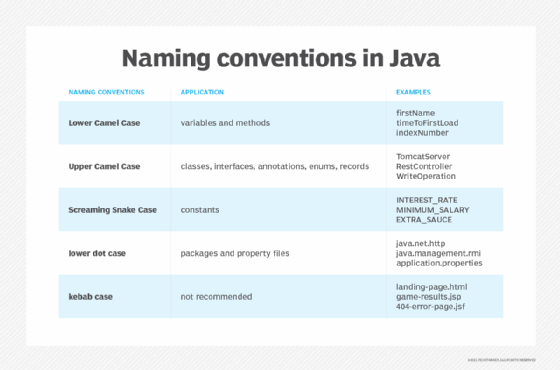Camel case vs. pascal case vs. snake case vs. kebab case
The key differences between camel case, snake case, pascal case and kebab case are how these programming naming conventions use capitalization and whitespace to make variable names more readable.
Snake case and kebab case
The snake case and kebab case naming conventions separate words with an underscore and a dash, respectively: snake_case and kebab-case. When a programmer uses only capital letters with these naming formats, they are called SCREAMING_SNAKE_CASE and FLAMING-KEBAB-CASE. Otherwise, snake case and kebab case place no requirements on the casing of letters.
Pascal case and camel case
Pascal case and camel case don't employ whitespace, but instead use capitalization. With pascal case, the first letter of every word in the name of a variable is capitalized, including the first letter: PascalCase. Camel case follows a similar convention, except the first letter can be either uppercase or lowercase -- CamelCase or camelCase -- depending on the use case.
Naming conventions are important in every programming language because they help make code more readable, which makes the code easier to maintain, troubleshoot and document.
Keep in mind, though, that every programming language has its own set of conventions. What's standard in Java won't necessarily be acceptable as a naming convention in Python or Mojo.
To learn more about the most popular code naming conventions, watch this full video on the differences between pascal case, camel case, kebab case and snake case.

Cameron McKenzie has been a Java EE software engineer for 20 years. His current specialties include Agile development; DevOps; Spring; and container-based technologies such as Docker, Swarm and Kubernetes.


